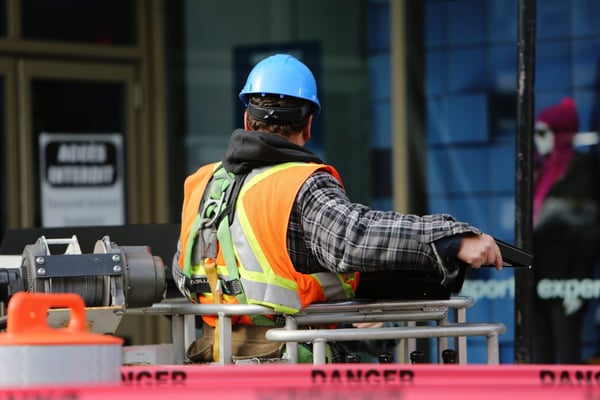As technology advances and more innovations come to light, the construction industry is finding unique ways to make these advancements work. Wearable technology is one of the newest forms of innovation in the industry. This technology can be broken down into three categories: visual, tactile and sensory. In this edition, we will discuss tactile wearable technology, how it aids workers’ durability and limits injuries.
Tactile wearables work to boost the user’s strength and/or endurance. Devices are designed to monitor and limit the force on the worker’s musculoskeletal frame, aiding in reduced strains, twists and back injuries. Other devices help a workers endurance and durability, increasing productivity.
There are a number of tactile wearables on the market today. There are smart boots, smart vests, smart helmets, cooling clothing and bionic suits are all examples of tactile wearable technology.
SmartBoots, developed by Sole Power, a construction technology startup, are not on the market yet. They are, however, accepting submissions to participate in their pilot program. SmartBoots aim to improve efficiency, safety and compliance. The boots will measure user fatigue, have emergency alerts, increase workflow transparency and prevent struck-by incidents. They do this via embedded sensors and communication technology that enables real-time location and accountability inside and out. This technology uses an Army-tested, patented kinetic charger that uses walking to charge the embedded sensors. This is cutting-edge technology, so be on the lookout for other companies following suit.
Hard hats in general are a key piece utilized on any construction site, whether a worker or visitor. Adding technology to helmets can make sense, and several companies out there have great products. Smart helmets can include a clear visor that displays 3D overlays. It adds an augmented reality, 360 degree view that provides a view of the worker’s surroundings, aiding in reduced injuries and accidents. The display also adds thermal vision, shows instructions and provides direct communication to remote workers. These helmets can also monitor health, are hands-free and data collection provides important information to managers about worker productivity. These will be essential moving forward.
Smart safety vests and cooling technology are a third form of tactile wearable technology. Safety vest updates include location-enabling and tracking capabilities, like monitoring a worker’s activities, how far they’ve walked, body temperature and hours worked. Hazard areas are defined with GPS and an alert will set off a flash should a worker enter one of these areas. There are call buttons for emergency situations so an injured person can be found. Add in cooling technology, which is a real problem on a lot of job-sites, and you’ve got one serious piece of technology on your hands. Cooling technology aids in airflow around the body to ensure sweat vaporizes faster. It helps keep body temperature within a normal range, something important in warmer climates or inside a poorly ventilated building. These vests are designed to provide effective productivity tracking, safety and increase real-time visibility for each worker.
The final piece of tactile wearable technology is bionic suits. Construction can be incredibly laborious and physically demanding industry. This aspect alone is a large contributor to the number and severity of injuries that happen on a jobsite. Some injuries, even repeated twists and tweaks, can leave lasting problems on the body. Bionic suits can provide the ability to pick up and operate heavy machinery with ease. They can reduce labor time. For example, a five-day job of chipping concrete can be reduced to just one day. These suits have a positive impact on the health and safety of workers, but they also make workers more efficient, which translates to increased productivity. While bionic suits are currently uncommon in the construction industry, there are construction-specific suits in the development phase. Most of these will be designed for specific types of equipment and jobs, which is helpful, and it shows there is progress being made.
Tactile wearable technology will be crucial for construction companies, developers, investors, brokers, general contractors, laborers and anyone else involved in the construction of a building or residence. This technology aids in keeping workers safe, reducing accidents and injuries, increasing productivity and efficiency and monitoring workers health. It may not all be available today, but it’s coming, and it won’t be long before it’s common practice to use this technology.

Recent Posts
- Spec Home Loans: Complete Guide to Construction Financing for Builders
- Spec Construction Loans: A Spec Line of Credit Is Worth the Paperwork
- Spec Homes and Pre-Sale Homes: Relative Benefits for a Spec Builder
- Spec Construction Success: Insights for the Investor Builder
- How Is a Spec House Different From Other Kinds of House Construction?
